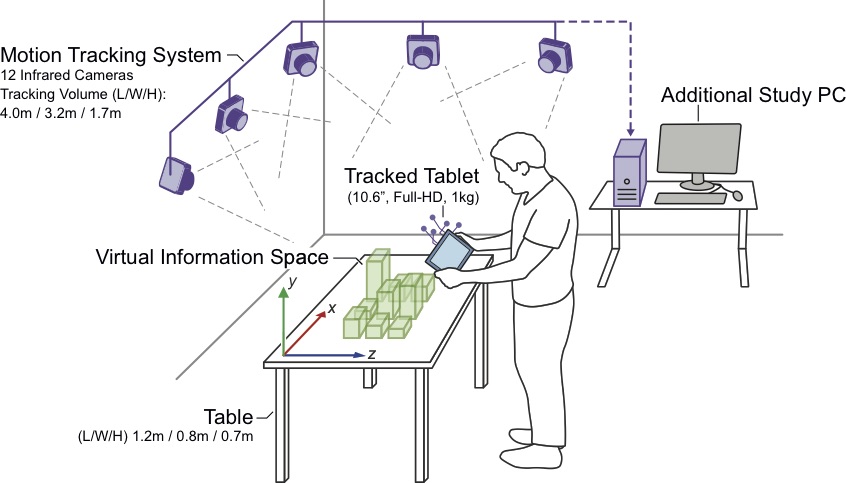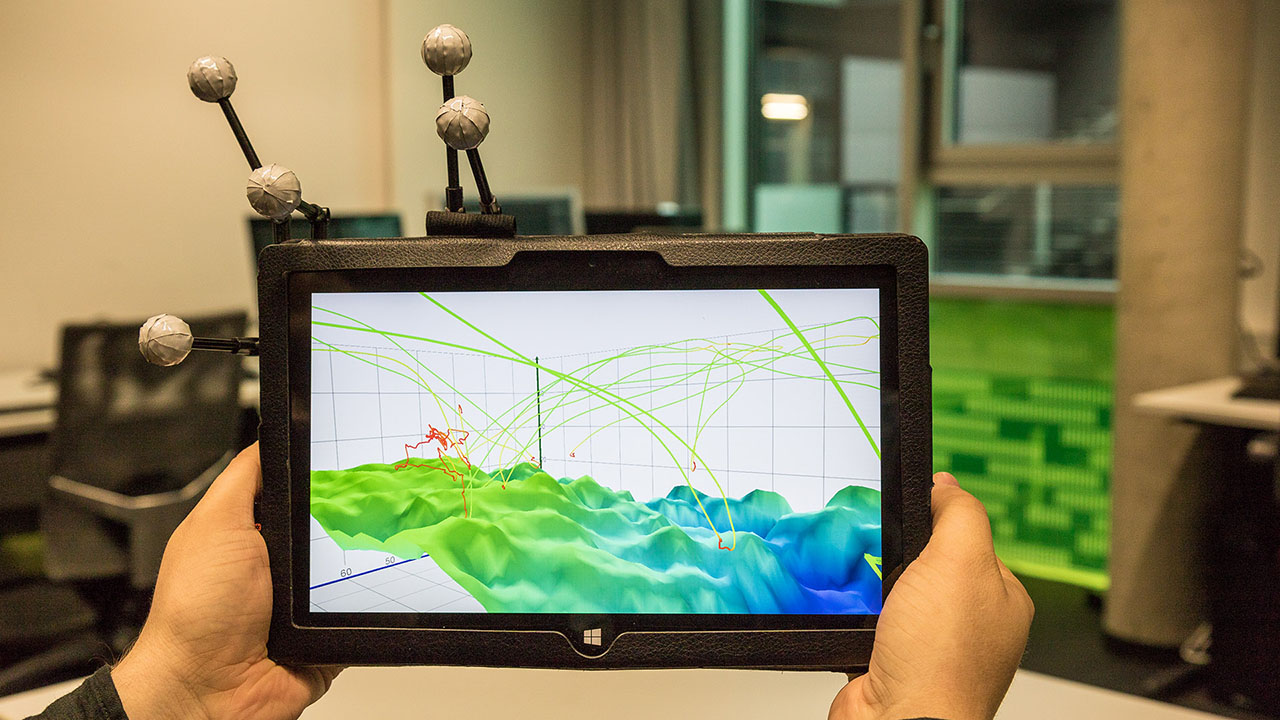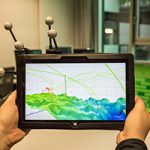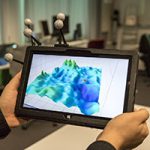We are interested in the usage of spatial interaction with mobile devices for improved 3D visualizations. To contribute to a better understanding of this interaction style, we implemented example visualizations on a spatially-tracked tablet and investigated their usage and potential.
Video
Table of Contents
Abstract
Three-dimensional visualizations employing traditional input and output technologies have well-known limitations. Immersive technologies, natural interaction techniques, and recent developments in data physicalization may help to overcome these issues. In this context, we are specifically interested in the usage of spatial interaction with mobile devices for improved 3D visualizations. To contribute to a better understanding of this interaction style, we implemented example visualizations on a spatially-tracked tablet and investigated their usage and potential. In this paper, we report on a qualitative study comparing spatial interaction with in-place 3D visualizations to classic touch interaction regarding typical visualization tasks: navigation of unknown datasets, comparison of individual data objects, and the understanding and memorization of structures in the data. We identify several distinct usage patterns and derive recommendations for using spatial interaction in 3D data visualization.

Our prototype running on a tracked tablet that we used for the study.
Height map used in the navigation task (NT).
Bar chart used for the comparison task (CT).
Scatterplot used in the structural understanding task (ST).
Presentation @ ACM ISS ’17
Info The paper was presented at the ACM ISS 2017 (Brighton, UK) in the paper session on Exploring Spaces: 3D Interaction.
Studying Spatial Interaction for 3D Visualization
Our main interaction concept is to explore 3D visualizations situated at a fixed position by physically moving a mobile device through space, which presents a view into the data. Specifically, the location and orientation of the mobile is mapped to a virtual camera (see figure on the right side).
For such systems, we would envision the users to employ physical navigation to get an overview and navigate between subsets of the data, as well as smaller scale spatial interaction supported by touch input to precisely investigate structures or specific data items.
Users would freely move the handheld device to explore the visualization, to easily compare values at different viewpoints, and to filter or select specific data points with subsidiary touch interaction techniques.

Analysis of Spatial Exploration Patterns

Visualization of selected camera trajectories of individual participants as line stripes. Color resembles movement speed (red = slow, green = fast). (a) NT with touch, using bird’s eye strategy, (b) a comparable strategy when using spatial interaction for the same task, (c) ST with touch, showing both the typical spherical patterns of the orbit camera model and the principal viewpoints selected by the participant, (d) similar patterns can be detected for spatial interaction.
Related Publications
@inproceedings{Bueschel2017_3DInfoVis,
author = {Wolfgang B\"{u}schel and Patrick Reipschl\"{a}ger and Ricardo Langner and Raimund Dachselt},
title = {Investigating the Use of Spatial Interaction for 3D Data Visualization on Mobile Devices},
booktitle = {Proceedings of the 2017 ACM International Conference on Interactive Surfaces and Spaces},
series = {ISS '17},
year = {2017},
month = {10},
isbn = {978-1-4503-4691-7},
location = {Brighton, United Kingdom},
pages = {62--71},
numpages = {10},
doi = {10.1145/3132272.3134125},
url = {https://doi.org/10.1145/3132272.3134125},
acmid = {3134125},
publisher = {ACM},
address = {New York, NY, USA},
keywords = {3D Data Visualization, Immersive Visualization, Mobile Devices, Spatial Input, Tangible Displays}
}List of additional material
@inproceedings{fixme,
author = {Wolfgang B\"{u}schel and Patrick Reipschl\"{a}ger and Raimund Dachselt},
title = {Improving 3D Visualizations: Exploring Spatial Interaction with Mobile Devices},
booktitle = {ISS 2016 Workshop Immersive Analytics: Exploring Future Interaction and Visualization Technologies for Data Analytics},
year = {2016},
month = {11},
location = {Niagara Falls, ON, Canada},
numpages = {7},
doi = {10.1145/3009939.3009949},
url = {http://dx.doi.org/10.1145/3009939.3009949},
publisher = {ACM},
keywords = {Spatial Interaction, 3D Visualization, Head-coupled Perspective, Information Visualization, Tangible Displays}
}List of additional material
Related Student Theses

3D Information Visualization with Mobile Devices: Head-coupled Perspective and Spatial Input
Christian Porzig July 20th, 2015 until January 17th, 2016
Supervision: Raimund Dachselt, Patrick Reipschläger, Wolfgang Büschel, Ricardo Langner

Use of Plane Tools for the Interaction with Spatial 3D Information Visualization
Philipp Roscher July 15th, 2016 until October 6th, 2016
Supervision: Patrick Reipschläger, Wolfgang Büschel, Raimund Dachselt



